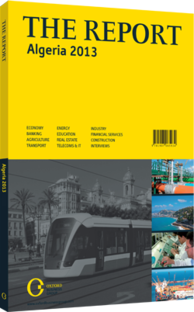The future of learning: E-learning is gaining momentum and providing a potential solution to the expected rise in student numbers
In the face of continued globalisation and rising competition, keeping up with technological change has become essential. Traditionally, information and communications technology (ICT) usage in Algeria has lagged behind its neighbours in terms of basic indicators, which has begun to create problems in terms of graduate employability. To ensure people acquire the necessary IT skills to compete in the modern economy, Algeria is increasing the use of ICT in education.
LAYING THE FOUNDATION: Plans are ongoing to equip schools and educational institutions with ICT equipment. The Centre for the Supply and Maintenance of Teaching Equipment (Centre d’Approvisionnement et de Maintenance des Équipements et Moyens Didactiques, CAMEMD) is in charge of the acquisition of IT equipment on behalf of the Ministry of National Education. In 2012 CAMEMD launched a tender offer to provide 2251 middle and primary schools, as well as other educational institutions, with computer equipment. The tender was awarded to Algerian manufacturer Condor Electronics for a total AD3.4bn (€31.28m).
While setting up and developing equipment is one of the main pillars to integrating ICT into education, training is another major component. Partnerships are gradually being formed to introduce both students and teachers to using ICT. In collaboration with Microsoft and the Ministry of National Education, Condor has engaged in a technological discovery programme in 10 different schools located in underserved areas of the country. Algérie Télécom (AT), the incumbent provider, in 2012 signed a partnership with Constantine’s Mentouri University to assist and train students and staff about technological changes and the needs of modern businesses. AT will also take part in renewing the university’s older IT equipment.
E-LEARNING: With the advent of new technological equipment, e-learning is slowly gaining momentum in Algeria and could provide a potential solution to the expected rise in student numbers in the years to come. A number of initiatives supporting e-learning have already been launched. The Algerian Learning Centre (ALC), for instance, recently established an e-learning programme called English Discoveries Online, providing online English classes. “E-learning offers many advantages, particularly in terms of accessibility. Provided one has access to the internet, e-learning is a way of extending access to quality education nationwide and reaching underserved areas in particular,” Hacene Chaib, general manager at ALC, told OBG.
Moreover, e-learning is increasingly becoming a popular means of training among students who have dropped out of national education and who are willing to pursue distance learning. Distance learning is a mechanism enabling students aged 17 and over to proceed with middle and secondary education.
The National Office for Distance Learning and Training has played an important role in devising ICT-compatible curricula, such as by providing students enrolled on the Certificate of Secondary Education and Baccalaureate exams with tablet-compatible software. This tool is expected to be made available to students enrolled on distance-learning courses in the coming years. However, there are limits to the potential for expansion in the short to medium term, given the low penetration rates for internet and broadband and the still-pending roll out of 3G connectivity.
ROOM FOR GROWTH: According to government estimates, 23% of primary schools, 77% of middle schools and 84% of high schools are connected to the internet nationwide. However, the overall internet penetration rate is low (15.23% in 2012), which is partly related to the lack of a 3G network, but also to low spending on ICT by regional standards, with just $372m – or 0.2% of GDP – spent on computer software and services in 2011, compared to 0.4% in Morocco and 0.6% in Tunisia, according to the 2012 UNCTAD Information Economy report. Internet access rates are expected to increase, while costs should drop with the planned launch of 3G at the end of 2013 (see Telecoms & IT chapter). This should drive investment in innovative uses of ICT.
You have reached the limit of premium articles you can view for free.
Choose from the options below to purchase print or digital editions of our Reports. You can also purchase a website subscription giving you unlimited access to all of our Reports online for 12 months.
If you have already purchased this Report or have a website subscription, please login to continue.

